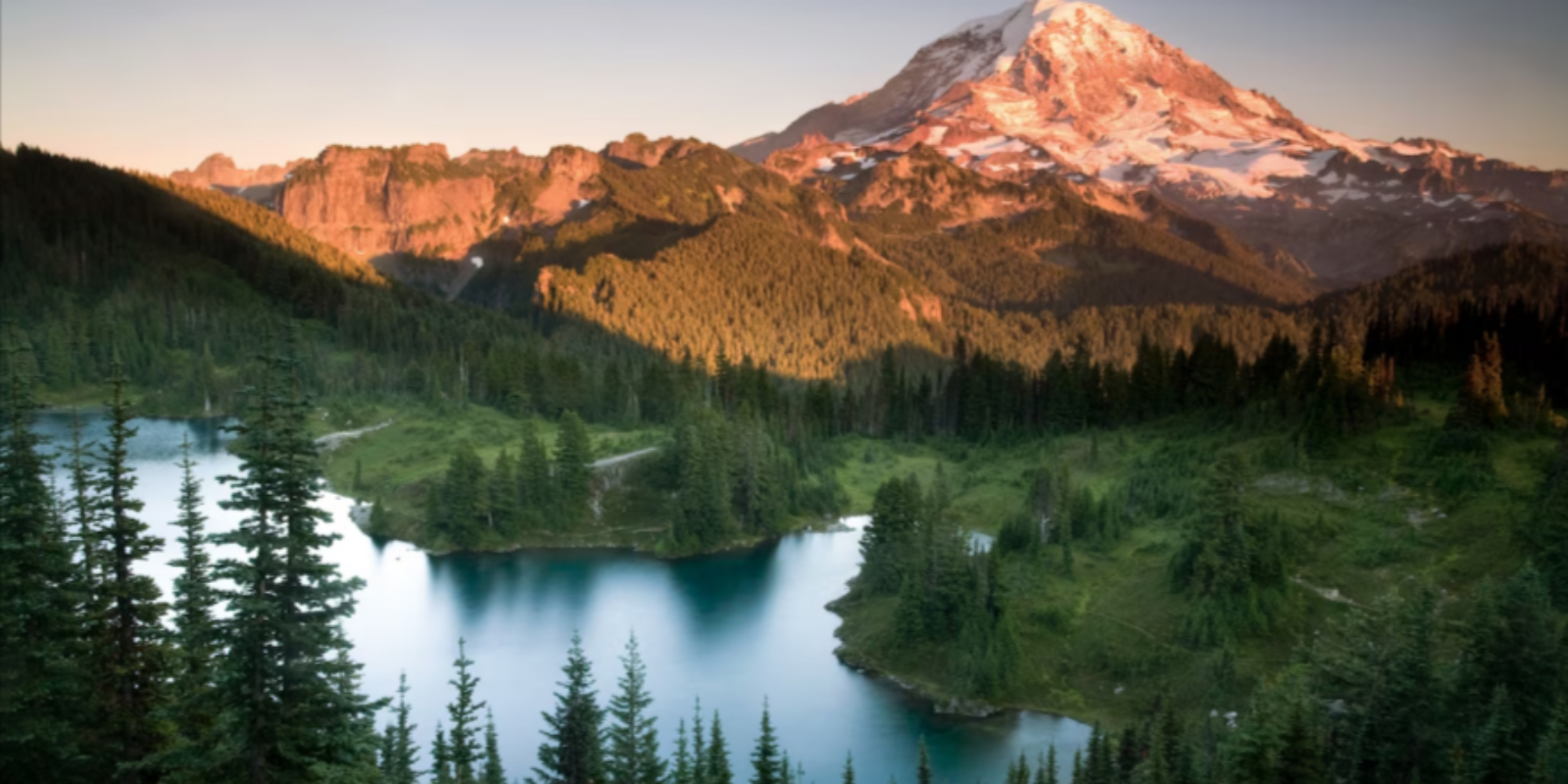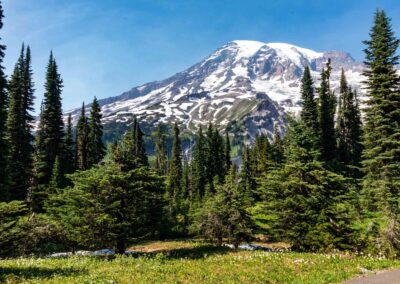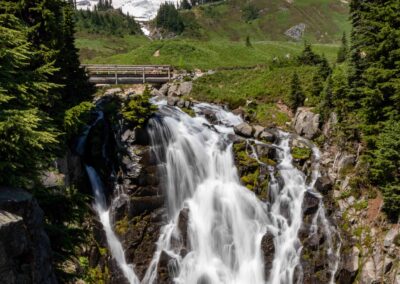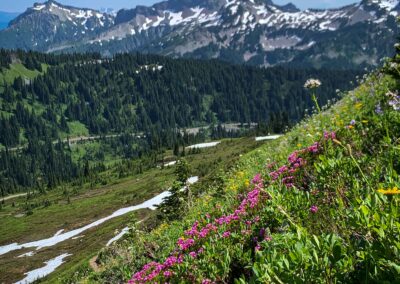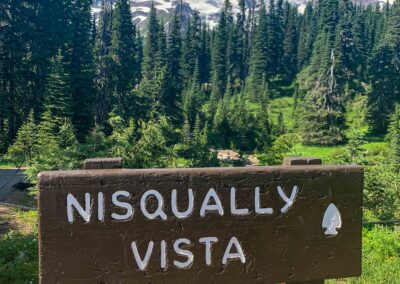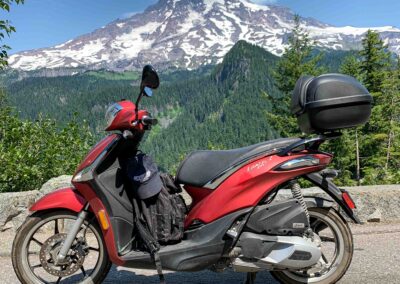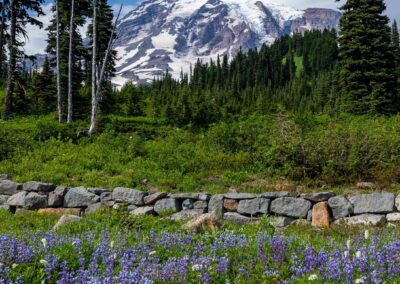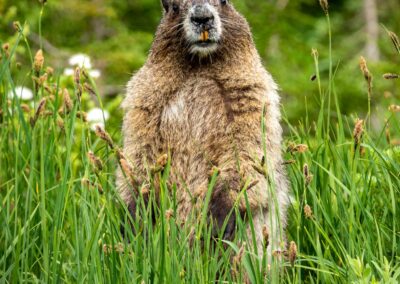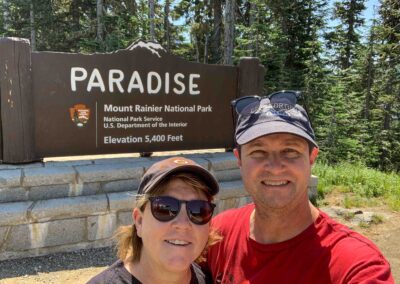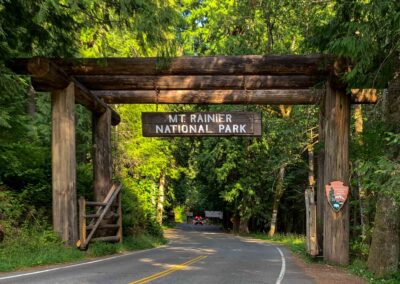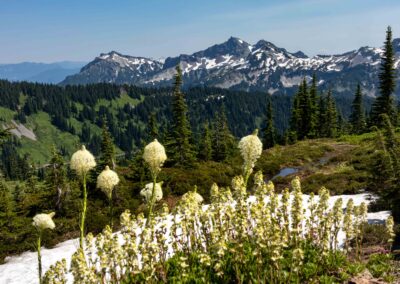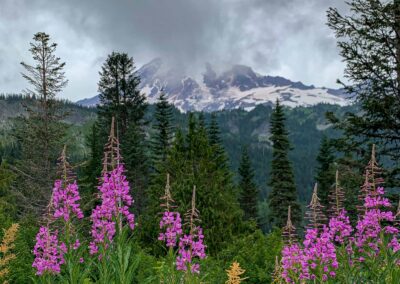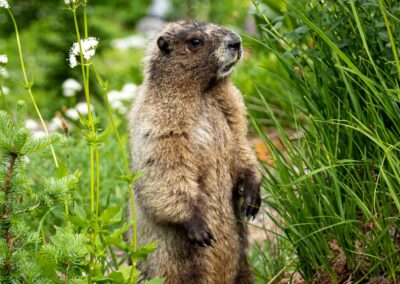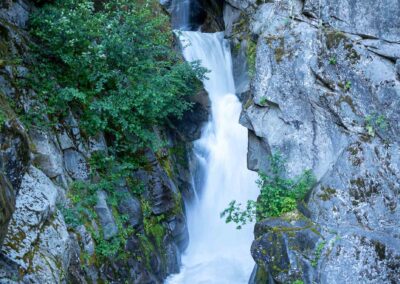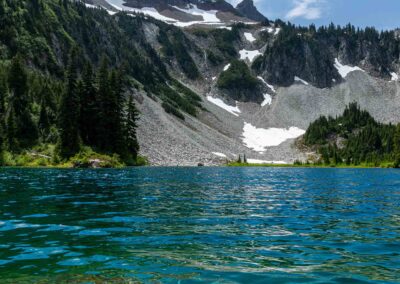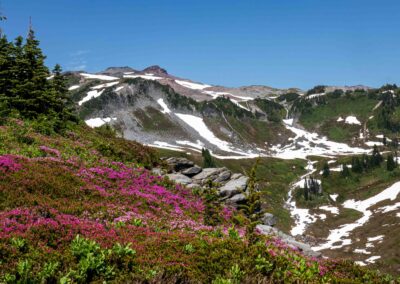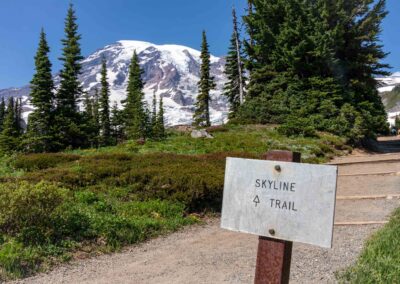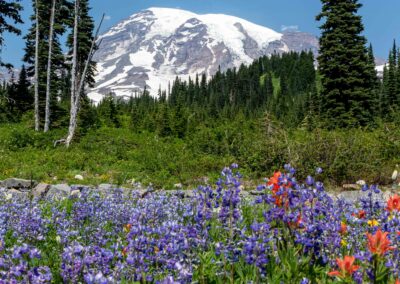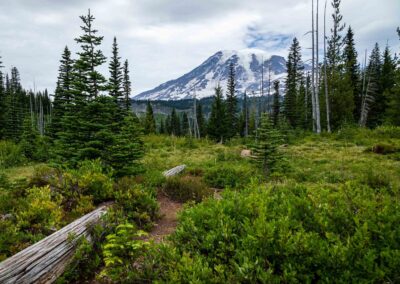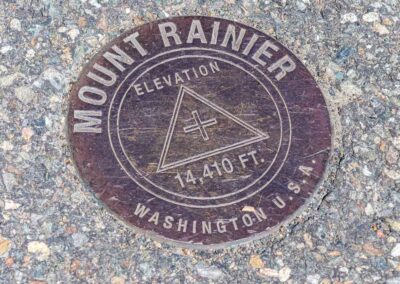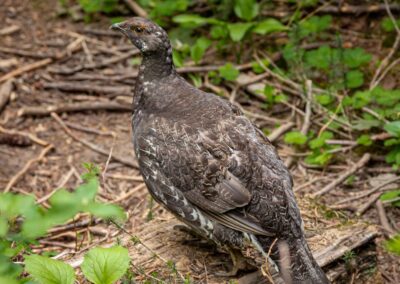Mount Rainier is one of the most majestic and iconic landmarks in Washington State. Towering at 14,411 feet, it is the highest peak in the Cascade Range and an active volcano, surrounded by lush forests, alpine meadows, glaciers, and a variety of wildlife. The mountain itself is often capped with snow, making it visible from many parts of the state, and it draws visitors year-round for outdoor adventures.
Fast Facts
Location: Washington
Established: 1899
Size: 236,381 acres
Annual Visitors: 1.4 million
Visitor Centers: Sunrise, Paradise Jackson, Ohanapecosh
Entrance Fee: $30 per vehicle, $25 per motorcycle, or $15 per person
Detailed information visit: Visit Mount Rainier
Mount Rainier – Nisqually Entrance
Directions from Seattle to Nisqually Entrance
-
Start on I‑5 South:
From downtown Seattle, get on Interstate 5 South. Stay on I‑5 for about 30 miles. -
Take the WA‑7 South Exit:
Look for the exit for WA‑7 South (often labeled toward Puyallup or Tacoma). Merge onto WA‑7 South. -
Continue on WA‑7 to Eatonville:
Follow WA‑7 South for roughly 40 miles. This stretch will take you past several small towns; keep an eye out for road signs directing you to Mount Rainier National Park. -
Turn onto WA‑706 East:
In Eatonville, you’ll find signage for the park. Turn left onto WA‑706 East (also known as the “Ashford” route). This highway leads directly toward the park’s Nisqually Entrance. -
Arrive at the Nisqually Entrance:
Continue on WA‑706 East for about 30 miles. As you approach the park, you’ll see signs marking the entrance. The entrance station will be on your right.
Additional Tips
- Travel Time: The drive usually takes around 2 hours, depending on traffic and road conditions.
- Check Conditions: Before you leave, check the latest road conditions and any seasonal advisories on the Mount Rainier National Park website or local transportation resources.
- Navigation: Using a GPS or a mapping app can provide real-time updates and alternative routes if needed.
Safe travels and enjoy your visit to Mount Rainier National Park!
Why go and what to know
One of the world’s oldest national parks, Mount Rainier became part of the federal system in 1899, shortly after its last eruption. Park status was the culmination of a long campaign by John Muir and other conservationists to preserve a unique forest, field, and glacial landscape under threat from the timber and mining extraction that had already ravaged much of the American West.
Photo credit: https://theparksarecalling.com/mt-rainier-gallery/
Spring at Mount Rainier: During the spring months, Mount Rainier transforms into a vibrant, blooming landscape. The wildflowers start to emerge in areas like Paradise, where meadows become a canvas of color. Spring offers a quieter time to visit before the summer crowds arrive, with cooler temperatures at higher elevations and a still-thriving snowpack at the peak, making it a popular time for snowshoeing and cross-country skiing. The lower elevations, such as Longmire and the Nisqually area, are often more accessible with fewer snow obstacles, allowing for a relaxing hike or drive along scenic routes.
Summer at Mount Rainier: Summer is the most popular time to visit Mount Rainier, with long days, warmer temperatures, and the full range of outdoor activities available. As the snow melts, more hiking trails become accessible, offering everything from gentle walks through alpine meadows to challenging summit attempts. The Paradise area is especially beautiful during this time, with an explosion of wildflowers, including lupine, Indian paintbrush, and beargrass. Visitors can take advantage of hiking, mountain biking, and the opportunity to explore iconic spots like the Sunrise and Reflection Lakes areas. The weather is typically mild, but it’s essential to be prepared for sudden changes in conditions as you ascend in elevation.
All-Season Travel Destination: While spring and summer are the most popular months, Mount Rainier is a year-round destination. During the fall and winter, the mountain offers a quieter, more peaceful atmosphere, making it ideal for those seeking solitude. The mountain’s amenities cater to all seasons, from guided snowshoe and skiing tours in the winter to cozy lodges with warm fireplaces. For those wishing to extend their visit, there are multiple accommodation options, including rustic cabins, campgrounds, and the historic National Park Inn in Longmire, open year-round. The Paradise Inn, offering stunning views, is open during the summer months, providing an incredible base for exploring the park.
Whether you’re planning a day trip or an overnight stay, Mount Rainier offers a full range of amenities and activities for every season, making it a truly unforgettable destination for visitors of all interests.
Highlights of Mount Rainier National Park:
- Paradise Area: Renowned for its panoramic views and vibrant wildflower meadows, Paradise offers accessible trails suitable for all fitness levels.
- Sunrise Area: Provides breathtaking vistas of the mountain and surrounding landscapes, especially captivating during sunrise.
- Nisqually Vista Trail: A short, paved trail offering views of the Nisqually Glacier and surrounding scenery.
Tips for Your Visit:
- Check Road Conditions: Before setting out, verify the status of park roads, as some may be closed seasonally or due to weather conditions.
- Timed Entry Permits: During peak seasons, certain areas like Paradise and Sunrise may require timed entry permits. It’s advisable to check the National Park Service website for the latest information.
- Start Early: To maximize your experience and avoid crowds, consider departing early in the morning.
A day trip to Mount Rainier from Lakewood offers a perfect blend of adventure and relaxation, allowing you to immerse yourself in the natural beauty of one of Washington’s most iconic landmarks.
No reviews yet. Be the first to review!
Did you like this article? Provide a rating.
